
Analyzing your customer feedback gives you actionable, targeted insights that help you fine-tune strategies, enhance customer experiences, and fuel real growth.

Customers want more than just products—they want to feel heard, valued, and appreciated. In fact, 63% of US consumers would ditch a brand after a poor customer experience. And 65% were willing to pay higher prices for exceptional customer service.
In today’s competitive market, understanding what your customers think and feel is everything. Each interaction with your brand leaves behind valuable insights.
That’s where Voice of Customer (VoC) Analytics steps in. Analyzing your customer feedback gives you actionable, targeted insights that help you fine-tune strategies, enhance customer experiences, and fuel real growth.
In this article, we’ll take a look at why Voice of Customer analytics is essential for businesses, and how you can start implementing it in your organization. We’ll cover the best practices for collecting customer feedback as well as how to choose the right VoC tools for your business. And finally, don't miss our top tips for tackling the most common challenges that could derail your VoC program!
Voice of the Customer (VoC) Analytics is the process of gathering, analyzing, and interpreting customer feedback across various touchpoints. Techniques like AI text analysis, sentiment analysis, and Natural Language Processing (NLP) are used to turn raw customer opinions into data-driven strategies.
Businesses used to just send out a few surveys and hope their customers would tell them what they really thought about the company. These days VoC programs are carefully targeted and structured to dig deep into customer mindsets and opinions at every stage of their journey.
Broader Data Sources: Traditional feedback usually comes from more structured methods like surveys or focus groups, while VoC pulls in customer data from all kinds of places. This could include social media, customer support, and online reviews. The broader mix of channels gives a much fuller picture of how customers feel.
Real-Time Insights: Using AI analysis tools like Thematic to process your VoC data gives you real-time insights. That means you can address issues almost as they arise. In contrast, traditional methods often rely on periodic surveys which can lead to delayed responses to customer concerns.
Deeper Analysis: VoC analytics leverages advanced techniques like sentiment analysis and text mining to understand the emotions and context behind feedback. Traditional methods typically rely on direct questions and often miss the nuances of customer sentiment.
Actionable Intelligence: Voice of Customer analytics translates feedback into data-driven insights that can directly inform business decisions. This data can be a powerful tool for convincing stakeholders to take strategic action. Traditional methods might provide useful information, but they are often more static and less immediately actionable.
Written by a CX expert, this handbook simplifies VoC strategies and helps you get the most from customer feedback.
What's inside:
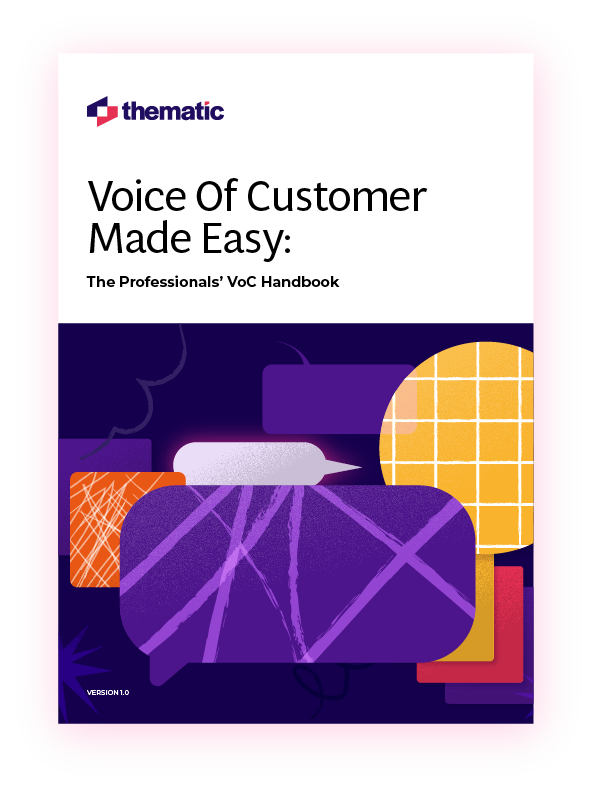

Voice of Customer (VoC) Analytics allows organizations to understand their customers better than ever before. Here's a few reasons why so many businesses now consider their VoC program a top priority:
VoC analytics helps businesses collect feedback from all sorts of places and get a clear view of how satisfied their customers are.
For example, if a company sees customers complaining on Twitter about long wait times for support, they can jump in and fix that issue before it becomes a bigger problem. By digging into VoC data, businesses can address issues early and also create personalized experiences that keep customers coming back.
Instead of relying on assumptions, Voice of Customer analytics provides concrete, data-backed insights. Whether it's improving a product feature or revamping customer support, businesses can make strategic decisions based on what customers are actually saying.
This real-time, actionable intelligence keeps companies responsive and agile in a constantly changing market.
Happy customers are loyal customers. By actively listening to and acting on customer feedback, companies can reduce churn and foster loyalty.
In fact, a recent Salesforce study showed that 92% of consumers were more likely to make another purchase after a positive customer service experience. The same research showed that 78% would do business with them again even after a mistake if the business had excellent customer service.
Listening to customer feedback helps businesses stand out in a crowded market. And that benefits the bottom line. Businesses that focus on improving their customer experience report an estimated 80% increase in revenue.
Voice of Customer analytics offers invaluable insights into customer preferences which companies can use to build better products.
By understanding what customers love, and what frustrates them, businesses can prioritize the most important features in their development pipelines. This leads to more successful product launches, better customer satisfaction, and ultimately, higher profits.
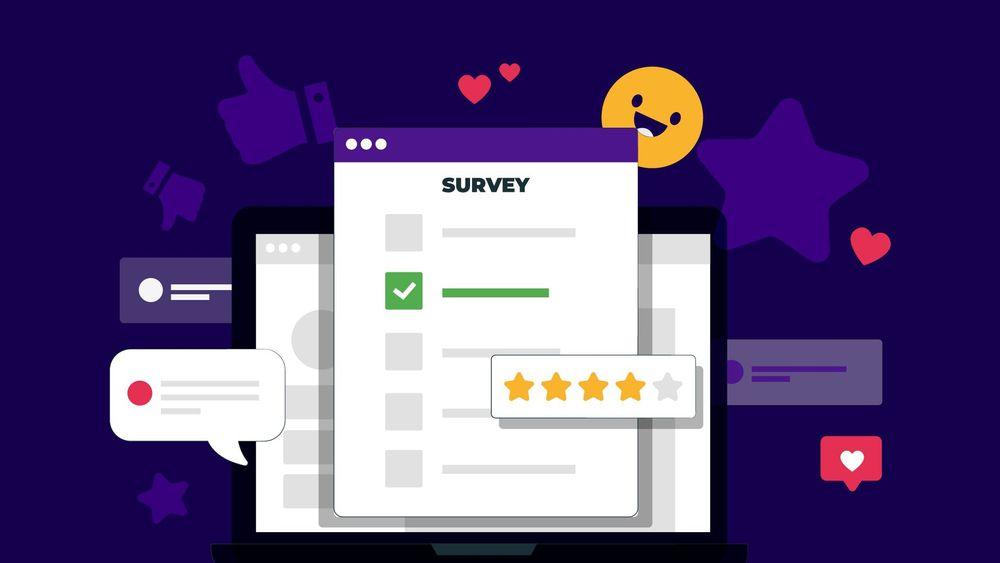
In most VoC programs advanced machine learning algorithms are used to process vast amounts of unstructured data (like comments or reviews) to detect customer emotions, tone, and overall satisfaction. This helps businesses go beyond the “what” of feedback to understand the “why” behind it, giving deeper insights into customer behavior.
Here are a few examples of how you might use Voice of Customer analytics to enhance your customer experience:
Personalization: Voice of Customer analytics helps businesses understand individual customer preferences and tailor interactions accordingly. Personalized experiences make customers feel valued, increasing engagement and loyalty.
Proactive Problem-Solving: VoC helps businesses spot and tackle issues before they become major problems. By getting real-time feedback, companies can quickly address complaints and keep customers happy, boosting satisfaction and loyalty.
Continuous Improvement: When businesses regularly gather and review feedback, they can keep tweaking and improving their products and services to better meet customer expectations. This feedback loop leads to happier customers and stronger brand loyalty over time.
Let’s walk through the steps you’ll need to follow to implement VoC analytics in your organization:
The first step is to identify where and how your customers interact with your brand. Key touchpoints can include:
Customer Surveys and Questionnaires: Post-purchase surveys or NPS (Net Promoter Score) surveys are popular tools to gauge customer satisfaction.
Social Media: Social platforms like Twitter, Facebook, and Instagram are rich sources of unsolicited feedback.
Reviews and Ratings: Customer reviews on websites, third-party platforms, or app stores can provide honest opinions.
Support Channels: Phone calls, live chat, and email correspondence can offer insights into customer issues or pain points.
Next, selecting the right VoC tools is essential for efficiently collecting, analyzing, and managing customer feedback. Here are some categories to consider:
Survey tools like SurveyMonkey or AskNicely allow you to easily create and send out surveys to your customers. Use these to collect structured feedback directly from customers.
AI analytics tools like Thematic can rapidly analyze vast quantities of unstructured data including social media comments, survey responses, or online reviews.
Integrated platforms like Medallia consolidate feedback from various sources, perform analysis, and provide actionable insights.
Once your feedback is collected, the next step is turning this raw customer data into actionable insights. Voice of Customer analytics relies on techniques like:
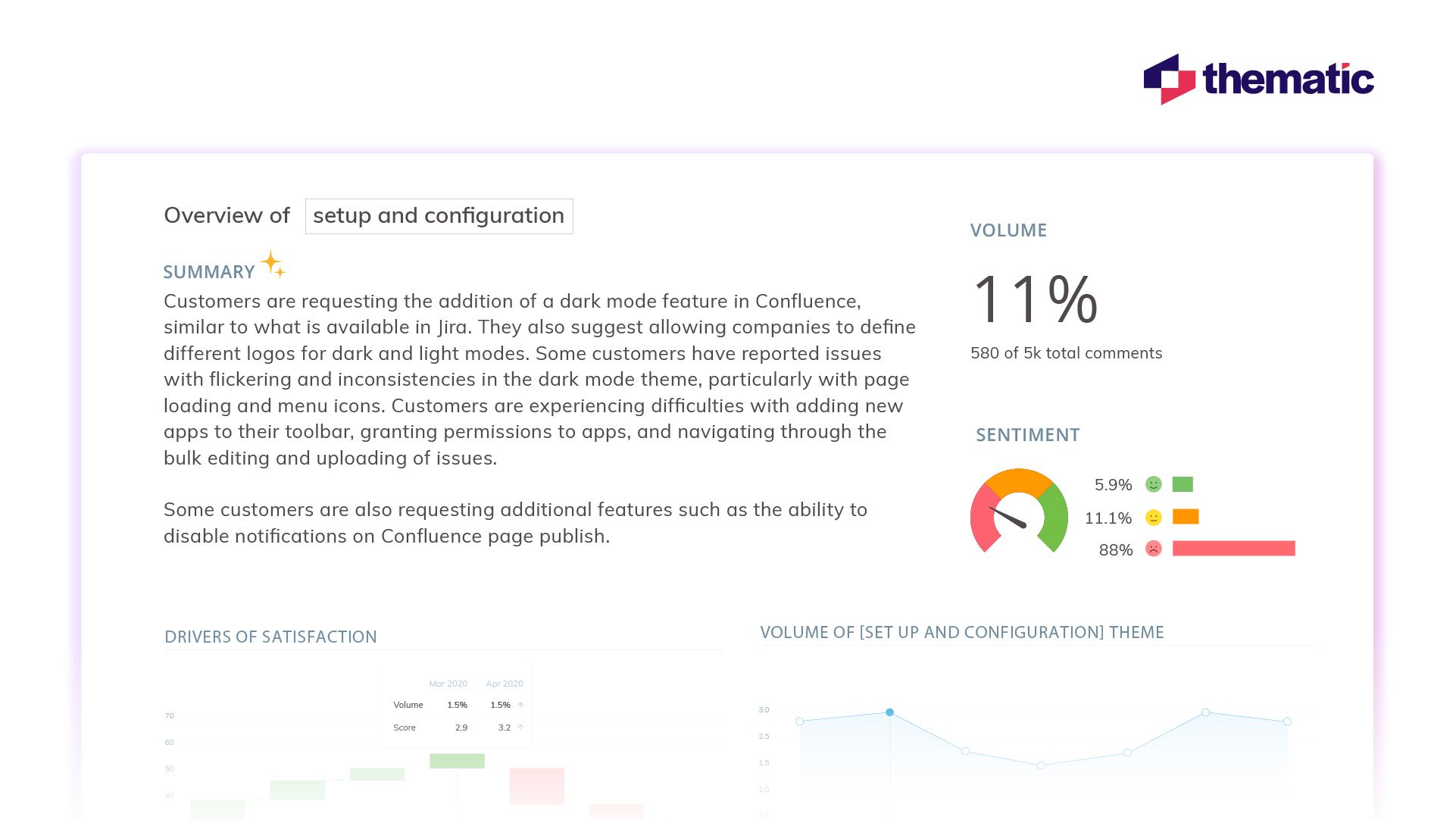
For Voice of Customer programs to be truly effective, the insights must be integrated and implemented in your organization. Here’s how to do that:
Cross-Department Collaboration: Ensure that feedback is accessible to all departments, from product development to customer service. Empower each team to act on relevant insights and get buy-in from stakeholders by sharing the data behind your recommendations.
Closed-Loop Feedback Systems: Implement processes to not only collect feedback but also follow up with customers after acting on their input. This strengthens customer relationships and increases loyalty.
Continuous Improvement: Use your insights to keep improving your products, services, and customer interactions. Aim to create a feedback loop that enhances customer experience over time.
Collect Data Across Multiple Touchpoints: For a holistic view of your customers make sure to gather feedback from various sources. This could include customer surveys, social media, reviews, and support channels. This ensures you capture the full range of customer opinions and experiences.
Leverage Advanced Analytics Tools: Use VoC AI analytics tools like Thematic to make sense of unstructured data. These tools can process huge quantities of data in minutes and give you a deeper understanding of customer emotions and trends that traditional methods may miss.
Ensure Cross-Departmental Collaboration: VoC analytics should be shared across teams, from marketing to product development, so everyone can act on the insights. Breaking down silos maximizes the potential of your feedback to create beneficial changes throughout the company.
Act on Insights in Real-Time: Quick response is key to improving customer experience. VoC analytics should be implemented with real-time monitoring to address customer concerns, identify trends and optimize experiences before issues escalate.
These days there are so many VoC tools it can be hard to pick the best one for your organization.
Let’s take a look at the top tools currently on the market and how they stand out from the crowd.
SurveyMonkey is a leading VoC survey tool known for its user-friendly interface and flexible survey options. Pick from a variety of question types, customize the design, and distribute your survey through email, social media, QR codes, and more.
AskNicely allows you to automatically collect feedback from any point on the customer journey with quick and simple surveys. A unique feature of this survey tool is that you can instantly compare team members' performance, making it easy to spot what sets your top performers apart.
Brandwatch is a top social listening tool that helps businesses track and analyze conversations happening online—whether it’s on social media, blogs, or news sites. A big pro is that Brandwatch gathers data from lots of different sources, so you get a comprehensive look at online chatter about your organization.
Talkwalker is another leading social listening platform that tracks brand mentions across social media, news sites, forums, YouTube, and review sites. Talkwalker keeps you in the loop on what’s being said about your brand everywhere online.
Qualtrics is a well-known customer experience platform with VoC tools like surveys, feedback forms, and text analytics. It can be a useful VoC solution for larger businesses already using Qualtrics since you can keep all your data in one place.
Medallia is another established platform for all things customer experience. You can easily store feedback from calls, emails, and other forms of communication for later analysis thanks to Medallia’s transcripts, speech analytics, and ticketing systems.
InMoment’s strength lies in its ability to combine multiple feedback channels into a single, coherent platform. This tool allows you to easily gather and analyze feedback from a variety of sources, including surveys, social media, and contact center interactions for a holistic view of customer sentiment.
Verint is a simple customer engagement platform that offers VoC tools such as surveys, feedback forms, and speech analytics. Verint can be a useful starter tool for VoC programs since it is relatively straightforward to gather data from multiple customers and analyze it within the platform.
Thematic is an AI-powered platform that makes it easy for you to analyze customer feedback data at scale. Thematic works by automatically identifying themes, or topics, in your VoC data in real-time. These are divided into themes and sub-themes so you can instantly see which topics are most important to your customers.
XM Discover, now part of Qualtrics, is an AI analytics tool that works best with Qualtrics data. You’ll start by choosing an industry AI model and customizing it for your business, so it might take a few weeks to start seeing customer insights.
In this table we’ve pulled together data from recent G2 reviews to compare the top VoC tools in an accessible and clear format.
Picking the right VoC tool can boost your feedback collection and analysis, and ultimately help you increase customer satisfaction. Here’s our top tips on how to find the best fit:
Evaluate Features: Look for tools with multi-channel feedback, advanced analytics, real-time reporting, and easy integration. Ensure they have everything you need to gather and make sense of your qualitative feedback effectively.
Consider Ease of Use: Choose a user-friendly tool with a simple interface. Good customer support is a plus if you need assistance.
Check Customization: Find a tool that lets you tailor surveys, feedback forms, and reports to your specific business needs.
Look for Integration: Ensure it connects smoothly with your CRM, marketing, and customer service platforms for a unified view.
Assess Scalability: Pick a tool that can grow with your business, handling more data and features as you expand.
Read Reviews and Get Demos: Read Reviews and Get Demos: Check user reviews and try demos to see if it fits your needs. Thematic currently offers a free guided trial that allows you to try out the platform using your own data.
Consider Your Budget: Balance cost with features. Sometimes spending a bit more upfront can save you money by improving efficiency.
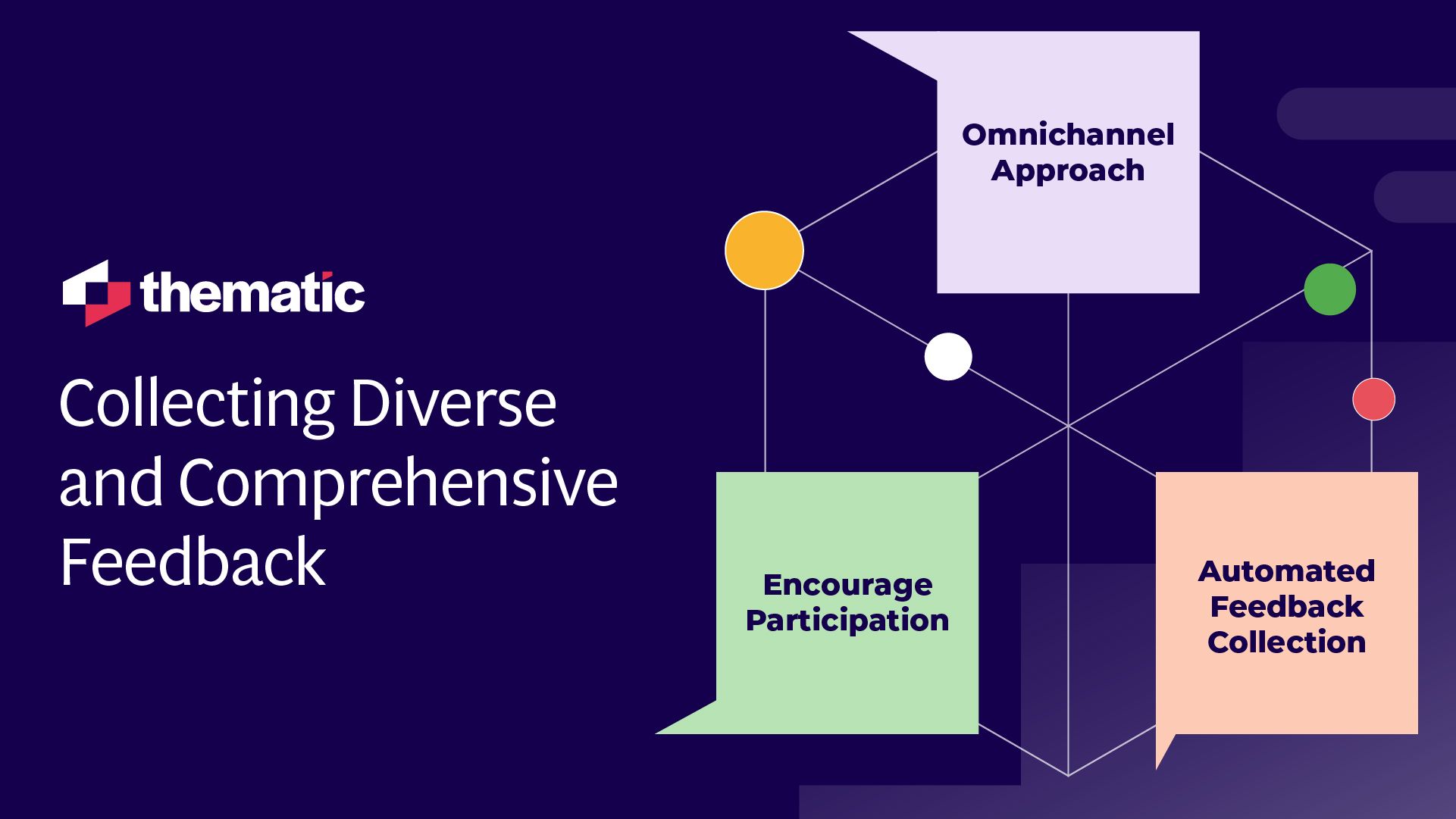
Challenge: Gathering feedback from multiple channels (social media, surveys, support tickets, product reviews) and ensuring the data is comprehensive and representative is a big challenge. Feedback often comes from your most highly-engaged customers. This can give you a skewed understanding of the broader customer base.
Solution:
Challenge: Much of the feedback collected is unstructured data, such as free-text responses in surveys, social media comments, and call transcripts. This makes it difficult to analyze at scale, especially when manual analysis is too slow and prone to biases.
Solution:
Challenge: Voice of the Customer data often exists in isolation from other critical data sources, such as operational data (sales and customer service metrics) or CRM systems. This can limit its value in providing a complete customer view.
Solution:
Challenge: Large organizations receive massive amounts of feedback, making it challenging to process, analyze, and prioritize.
Solution:
Challenge: Gathering feedback is only valuable if it leads to actionable insights. Many organizations struggle to translate VoC data into meaningful changes or improvements.
Solution:
Challenge: Customer feedback can be biased. For example, dissatisfied customers may be more likely to provide feedback than those with neutral or positive experiences, skewing results.
Solution:
There are plenty of ways to dive into your VoC data and get valuable insights. Here are the top approaches and how they can benefit your organization.
By scanning feedback for recurring words and phrases, you can identify common themes or topics that customers are consistently mentioning.
This helps you uncover trends related to product features, customer service, or specific pain points. For example, if "delivery time" keeps popping up in reviews, you know it’s an area that needs attention.
Thematic proprietary AI gives you a helping hand with this type of analysis by automatically identifying themes and sub-themes in your VoC data. You can then go into the Theme Editor and adjust the themes to meet your specific requirements.
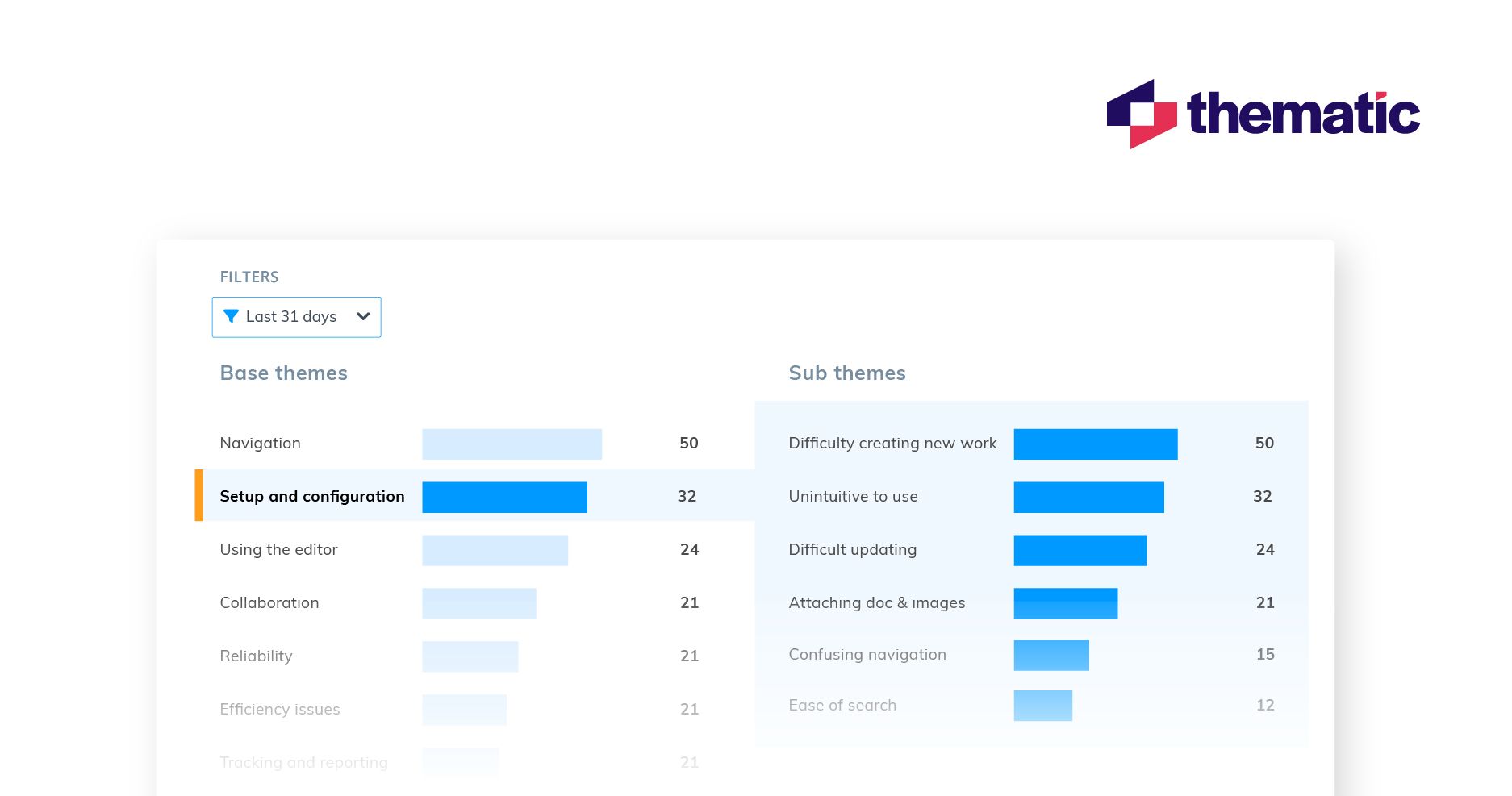
Sentiment analysis gauges the emotional tone of your VoC data, tagging it as positive, negative, or neutral. It can be applied to customer surveys, reviews, and social media to reveal how customers feel about your brand and help you spot issues early.
Using Thematic you can easily quantify the sentiment associated with a particular theme and see which issues need to be addressed to improve customer satisfaction.
In the example below 61.2% of the mentions of the theme “print boarding passes” have negative sentiment. Looks like this could be a good issue to focus on!

NPS is a quick and powerful tool to quantify customer loyalty. By asking how likely they are to recommend your business, you categorize them as promoters, passives, or detractors.
Combining thematic analysis, sentiment analysis and NPS in your customer program gives you better customer insights. You can dig into why they feel a certain way about your brand and understand where you can improve.
CES measures how easy it is for customers to resolve an issue or complete a task with your business. By asking a simple question like, "How easy was it to resolve your issue?" you can identify pain points in your customer service or product usability. Lower scores indicate friction that needs to be addressed, helping you improve overall customer satisfaction.
Integrating other types of customer data can help you get even more out of your customer analytics program. For example, you might want to link VoC feedback to financial data or customer demographics. This could help you identify the specific issues affecting your most valuable customers.
Watercare is New Zealand’s largest utility company. A few years ago severe storms overwhelmed their customer service processes. Their usual process for managing the customer experience wasn’t enough to handle the scale and complexity of the situation.
Watercare decided to set up a Voice of Customer program to respond to this crisis and find out what they needed to change. They opted to use Thematic’s powerful AI analytics software to mine their feedback data for insights.
Watercare knew that their customers were getting frustrated by unresolved issues and repair processes in the aftermath of the storms. Using Thematic summaries they realized that customers wanted better updates.
This enabled Watercare to shift to targeted problem-solving rather than fire-fighting. They now knew exactly what they needed to do to improve customer satisfaction.

Developments in AI have transformed Voice of Customer programs in recent years. And we can only expect that trend to continue. In the final section of this article, let’s take a look at what the future holds for customer insights:
As customer expectations for immediate responses grow, real-time VoC analytics will become a standard feature. Companies will be able to monitor customer sentiment in real time across various touchpoints and resolve problems instantly.
Businesses will also be able to make rapid adjustments to marketing campaigns, product offerings, or customer service strategies based on up-to-the-minute feedback.
The future of VoC analytics lies in omnichannel feedback integration. The ways that customers interact with brands is constantly growing and evolving. Think social media, in-store, mobile apps, websites, and many more.
The next generation of VoC platforms will seamlessly collect customer feedback from all these sources into a unified system. This ensures a holistic view of the customer experience and helps businesses make more informed decisions.
In addition to understanding current customer sentiment, VoC systems will increasingly incorporate predictive analytics, allowing companies to forecast future trends in customer behavior. This trend will help businesses anticipate issues before they arise and tailor their offerings accordingly.
Prescriptive analytics will take this a step further, providing specific recommendations on actions to improve customer experience based on these predictions.
As customer analytics programs become more sophisticated, businesses will increasingly use them to offer hyper-personalized experiences.
By analyzing individual feedback at scale, companies will be able to tailor interactions, offers, and services to the unique preferences of each customer. This will foster stronger relationships and improve customer retention.
Another emerging trend is the application of VoC analytics methodologies to employee feedback, often referred to as Voice of Employee (VoE).
This approach uses similar tools to capture employee sentiment, identify areas for workplace improvement, and enhance the overall employee experience.
Ready to get started? Why not try out Thematic on your customer data and see for yourself why so many companies use us for their VoC programs.
Join the newsletter to receive the latest updates in your inbox.